Iran executed over 900 people in 2024, including dozens of women - UN

Iran executed 901 people in 2024, including 31 women, marking a rise in capital punishment cases, the United Nations human rights office said on Tuesday.

Iran executed 901 people in 2024, including 31 women, marking a rise in capital punishment cases, the United Nations human rights office said on Tuesday.
Most executions were for drug-related offenses, but political dissidents and individuals linked to the 2022 protests—sparked by the death of 22-year-old Mahsa Amini in morality police custody—were also among those executed, the UN said.
"It is deeply disturbing that yet again we see an increase in the number of people subjected to the death penalty in Iran year-on-year," said United Nations High Commissioner for Human Rights Volker Türk. "It is high time Iran stemmed this ever-swelling tide of executions."
The 901 executions in 2024, compared with 853 in 2023, represent the highest annual number since 2015, when 972 people were executed, according to the UN.
Of the 31 women executed last year, many faced charges of murder, often stemming from circumstances of domestic violence, child marriage, or forced marriage, said UN rights office spokesperson Liz Throssell during a Geneva briefing Tuesday. She added that this was the highest number of female executions in at least 15 years.
Since the start of 2025, Iran has executed at least 15 prisoners in various prisons, the US-based Human Rights Activists News Agency (HRANA) reported on January 2.
At least 54 political prisoners are currently facing execution across various prisons in Iran, according to HRANA.

Italian Foreign Minister Antonio Tajani will host a Quint group meeting in Rome on Thursday, focusing on the Middle East, particularly Syria and Iran, Italian media reported Tuesday.
The gathering, set to take place at Villa Madama, will include US secretary of state Antony Blinken and representatives of the four European counterparts in the informal coalition known as 'Quint'; France, Germany and the United Kingdom.
Tajani will discuss urgent issues such as the recent arrest of Italian journalist Cecilia Sala who travelled to Iran on December 13 with a journalist visa and was detained in Iran on December 19.
Iranian authorities cited “violating the laws of the Islamic Republic of Iran” as the reason for her arrest, but have not released details of the charges.
However, a source familiar with discussions between Sala's family and the Italian government told Iran International that Tehran made clear to Rome that Sala's freedom depends on Italy's release of Mohammad Abedini Najafabadi, an Iranian arrested at Washington's behest.
Iran has denied any link between Sala’s arrest and Abedini’s detention, with government spokesperson Fatemeh Mohajerani saying on Tuesday that it "is in no way a retaliation."
Italian media reported Monday that following a meeting between Meloni and Trump, the incoming US premier has agreed to temporarily suspend Abedini's extradition.
Deputy Prime Minister Matteo Salvini praised the diplomatic efforts. In a post on X he said: “Well done Giorgia Meloni for visiting US President-elect Donald Trump to talk about peace, industrial and commercial cooperation, security, and the freeing of Cecilia Sala.”
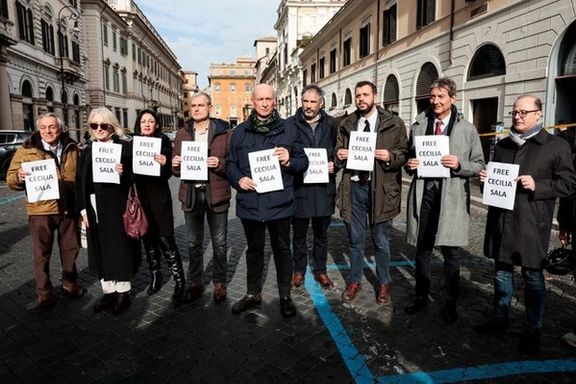
In a bid to pressure the government, the Italian foreign ministry summoned Iran’s ambassador in Rome, Mohammadreza Sabouri, on January 2 to demand her immediate release.
Italy now has a brief window to negotiate the journalist's release. Italian newspaper Il Giornale noted January 15 could be pivotal, as Milan's Court of Appeal rules on house arrest for Abedini, potentially enabling Italy to push for the same for Sala.
Rights groups have condemned Sala’s arrest, with the Lazio Journalists' Guild and the Rome Press Association organizing a protest on Tuesday to demand her immediate release.
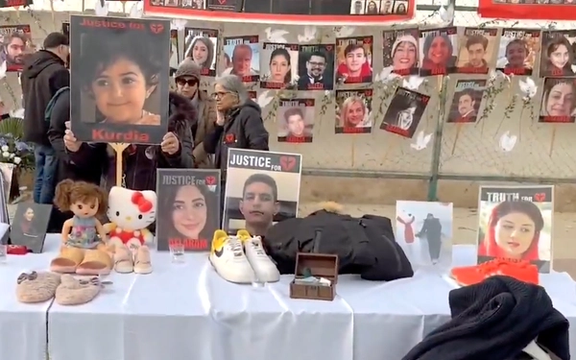
Families of those killed in the downing of Flight PS752 gathered at the crash site in Shahedshahr, Tehran Province, on the fifth anniversary of the tragedy under the slogan "Never Forget, Never Forgive."
The Ukrainian passenger plane was shot down by missiles from the Islamic Revolutionary Guard Corps (IRGC) on January 8, 2020, shortly after takeoff, killing all 176 people onboard, including the crew.
For three days after the incident, authorities concealed the fact that the plane had been shot down, repeatedly claiming the crash was an accident.
Masoud Ebrahim, whose daughter Niloufar was one of the victims, began his speech with the phrase “Woman, Life, Freedom” and honored “all those who have lost their lives and suffered oppression over the past 46 years.”
He said, “We didn’t know that everyone in [Khamenei’s] circle had gathered to decide to down the plane.”
Families brought items belonging to their loved ones to the site to honor their memories, videos of the gathering shared by the Association of Families of PS752 Victims.
Memorial ceremonies for the victims were also held in multiple countries, including Canada and Sweden, as they have been every year since the tragedy.
The families' association released a statement Tuesday on X, referring to "the great injustice that continues".
"Five years of crime, five years of lies, five years of repression, five years of longing, five years of standing firm, five years of reminding, and five years of the burning flame of anger that will not subside," the group said.
Legal battle continues
Lawyer Mahmoud Alizadeh Tabatabai, representing several victims’ families, criticized how Iranian judicial authorities handled the case. Speaking to Iran’s Didban news, he said the families were denied access to the plane’s wreckage and the full legal case file.
In April 2023, a Tehran military court sentenced the missile operator responsible for downing the plane to 13 years in prison and ordered him to pay compensation. During the investigation, Amir Ali Hajizadeh, the IRGC Aerospace Commander, was summoned as a suspect but was cleared of charges.
According to Tabatabai, Hossein Salami, the IRGC Commander-in-Chief, said in Iran’s parliament that “national interests required this missile strike.”
Tabatabai said that during the trial, a prosecutor’s representative told some families, “We did it, and it was the right thing to do.”
While 10 people were convicted in connection with the case, many families felt the process lacked transparency and withdrew their complaints. However, some, including Mohsen Asadi Lari and his wife, continued to appeal the ruling.
The Supreme Court reviewed the case and identified 12 flaws in the decision, returning it to the First Military Court for retrial. However, Tabatabai said, “Six months have passed, and no further action has been taken.”
He added, “We are following up regularly, but the court keeps delaying, saying ‘today or tomorrow,’ and we are waiting for the trial to restart in the First Military Court".
Military courts in Iran operate under the Judiciary Organization of the Armed Forces, a specialized branch of the judicial system for handling cases involving military personnel. The organization includes its own prosecutor’s office and specialized courts to oversee cases within its jurisdiction.
International actions
The four affected countries—Ukraine, Canada, Sweden, and the UK— have filed a formal complaint with the International Court of Justice and also the International Civil Aviation Organization against Iran. The complaints allege that the downing of the plane was deliberate.
"In the coming months, we envisage the response of the International Civil Aviation Organization (ICAO) and the convening of an initial session at the International Court of Justice (The Hague), and we hope the path of truth-finding will be properly followed," the families' association's statement read.
Flight PS752 was downed during a period of heightened tensions between Iran and the United States, following Iran's missile attack on US military bases in Iraq.
The missile attack was carried out in retaliation for the US killing of Iranian Quds Force commander Qassem Soleimani in Baghdad just days earlier.
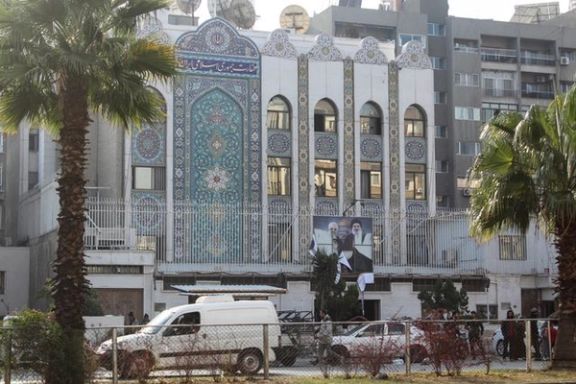
Iranian forces have largely withdrawn from Syria following the toppling of President Bashar al-Assad in December, the Wall Street Journal reported Tuesday, citing US, European, and Arab officials.
Members of Iran’s Quds Force have now relocated to Iran and the militia groups have disbanded, the report said, citing a senior US official.
According to Western and Arab officials, most forces in eastern Syria—including IRGC officers and Afghan, Iraqi, Lebanese, and Syrian fighters—retreated to al-Qaim, a border town on the Iraqi side.
Some Iranian personnel based in Damascus flew to Tehran, while Hezbollah fighters in western Syria fled overland to Lebanon, they said.
As thousands of Iranian military personnel and their allies fled the country, they were forced to leave behind a significant amount of military equipment and weapons, much of which was later destroyed by Israeli airstrikes or captured by Hayat Tahrir al-Sham (HTS) and other groups, according to Western diplomats cited by the Wall Street Journal.
The report added that US officials believe Iran will ultimately attempt to re-establish its forces across the region, though this may prove untenable in the short term.
According to a senior US official cited in the report, it is unlikely that Syria's Hayat Tahrir al-Sham (HTS), which toppled the Assad's government, will permit the Islamic Revolutionary Guard Corps (IRGC) to renew its military presence in Syria imminently due to Iran's longstanding support for Assad.
According to the Moshe Dayan Center for Middle Eastern and African Studies, Iran had as many as 10,000 IRGC forces in Syria at its peak during Syria's civil war, and another 5,000 army troops, plus thousands more Iranian-backed militia forces.
Their research showed that Iran held 55 military bases in Syria in addition to 515 military points.
The Saudi-owned Al Majalla news site reported similar numbers, citing that Syria had 830 foreign military sites under Assad, 70% of which belonged to Iran, 570.
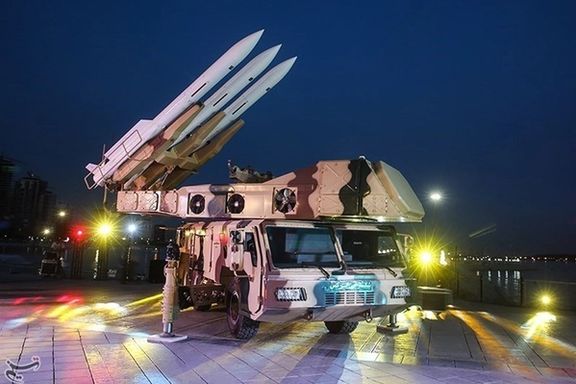
The Iranian military and the Islamic Revolutionary Guards Corps (IRGC) began a joint air defense drill near the Natanz nuclear facility in central Iran on Tuesday, testing readiness to protect the sensitive site from potential attacks.
During the first stage of the drills, air defense units practiced plans to protect the facility using point-defense tactics to counter a variety of aerial threats under simulated electronic warfare conditions.
State-affiliated media quoted Brigadier General Ghader Rahimzadeh, commander of the Khatam al-Anbia Air Defense Base, as saying on Monday that the air defense forces have stationed a series of new systems, which are unknown to the enemies near sensitive centers across the country.
An Iranian air defense radar for the S-300 missile system—a Russian-made surface-to-air system designed to counter air raids and cruise missiles—was targeted during Israel's strike on Iran in April last year, according to satellite imagery.
After recent airstrikes by Israel to strategic sites around Iran and Donald Trump’s election in the US, Iran’s armed forces have nearly doubled their winter drills this year, according to the Financial Times, citing an interview with IRGC spokesperson Ali Mohammad Naeini on Monday.
Since at least 2010, Israel has allegedly conducted dozens of attacks inside Iran, targeting sensitive nuclear and military installations.
These attacks became more frequent after July 2020, when a massive explosion occurred at the Natanz uranium enrichment site in central Iran, destroying one of the buildings.
An Axios report this week said that during a meeting in November between Donald Trump and Israeli minister of strategic affairs, Ron Dermer, the two discussed possible strikes on Iran's nuclear facilities.
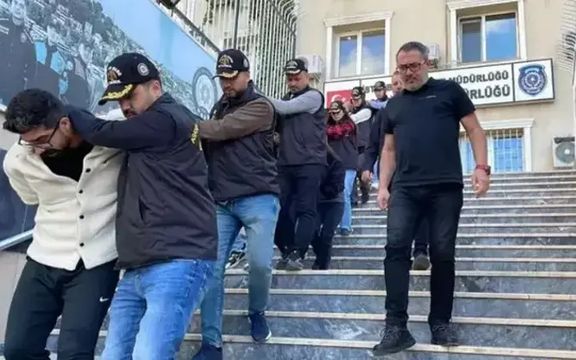
A court in Istanbul will examine a $1m fraud case involving Iranian students promised admission to Turkish universities without entrance exams.
The 17 defendants, 15 Iranians and two Turks, lured the victims to Turkey, advertising fake promises of university placements on social media.
They targeted wealthy Iranian families, convincing them that their children could enroll in top universities in fields like medicine and engineering.
Victims were flown to Turkey in groups and housed in dormitory-like buildings under the gang’s control. Families were charged between $45,000 and $150,000, depending on their financial status.
According to attorney Burcu Ertim, quoted by Turkish media, the fraud is believed to have begun around 2021, when members of the gang fled to Turkey following arrests in Iran.
They continued their operations in major cities such as Istanbul, Ankara, and İzmir. Victims only discovered the scam after realizing their university enrollments were fake, leaving them undocumented and unable to pursue their studies.
“These students came to Turkey hoping to gain an education and return to their homeland, only to face deception. Many have lost years of their lives, their financial savings, and their dreams,” Ertim said.
She also noted that victims suffered significant psychological distress and financial ruin, with many families losing their entire life savings. “When students go to the universities, they learn that there is no enrollment, not even residency. After two years, they face a huge shock,” she added.
The case has been filed at the Bakırköy 24th High Criminal Court. Seven suspects are currently in custody, eight remain fugitives, and two have been released under judicial supervision. All 17 suspects face charges of organized and aggravated fraud related to eight separate incidents.
Attorney İbrahim Şahin said the indictment has been prepared and accepted by the court, with the date yet to be set.
"These individuals will be tried for aggravated fraud," he said. "Each victim will be addressed separately, and the potential sentences add up to more than 200 years. This case involves both organized crime and systematic fraud. It is a significant matter for the victims and for addressing systemic fraud.”